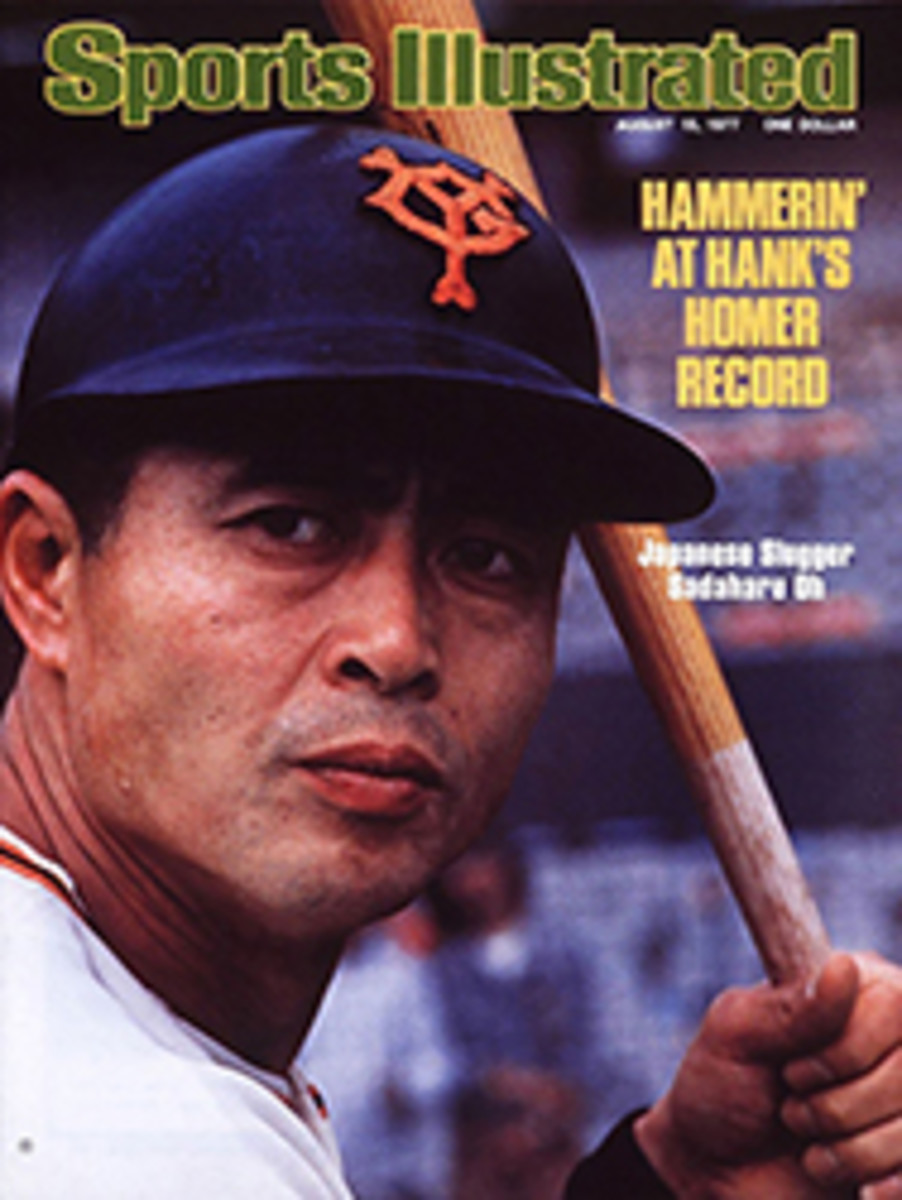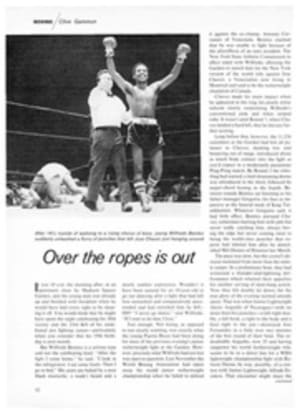
Australia sails to the fore
Why are they there? Why is Pelle Petterson, the talented Swede who already has enough worlds to conquer, messing around in the sloppy seas off Newport trying to win the America's Cup in his little, heavily canvased boat Sverige? Why is Marcel Bich, the ball-point baron of France, back for a third try in his old wood hull, France, which a few years ago spent the better part of a month on the bottom of a murky arm of the North Sea? Why is Alan Bond, the western Australian who spent a bundle and lost four straight to the Yanks in 1974, on hand again with a new boat, Australia? And why, oh why, is the eastern Australian, Gordon Ingate, a perennial second-stringer in 12-meter boats, trying in Gretel II, the wood Twelve that lost in 1970?
Not since the Christians met the lions in the Colosseum has there been such a one-sided sporting event as the America's Cup. Whereas in the past there was most often a single challenger willing to take his licks, now there are four, only one of which will have a chance to tangle with the lions. So why do they do it?
Pelle Petterson, the newcomer to the game, gives the simplest answer: "Because the America's Cup is one of the greater things in yachting."
"Why did I get in it again?" Alan Bond says. "Because I thought we could improve our performance based on our experiences last time around."
"Why do I do it again?" says Baron Bich. "When you are once involved in the America's Cup, it is difficult to get out. I do not have shackles on my legs, of course, but the races and the boats are fantastic toys to play with, giving you maximum problems to solve. We are all here because we like to solve problems. If you do not enjoy problems, you don't belong in the America's Cup."
Gordon Ingate is in it primarily because he is Australian. Ever since an athlete from Down Under won two events in the first modern Olympics 81 years ago, taking part has been the Australian style. As Ingate puts it, "It is better to compete and lose than not compete at all."
Early last summer when Bond temporarily canceled his challenge because of differences with his designers, and another Aussie challenge foundered for want of funds, Ingate was in a yacht club bar with friends who were deploring the fact that Sweden and France would be after the cup in '77 and Australia would not. As Ingate remembers, someone said, "Any boat is better than no boat," whereupon Ingate put a note on the bar pledging money in five figures and it was immediately covered seven times. "So here we are," Ingate sums up, "a secondhand crew with an old boat."
Gretel II, Ingate's "old boat," has been rejuvenated by her designer, Alan Payne, in the hope that she might beat her rivals if the winds stay light. Ingate's "secondhand crew" is beyond rejuvenation: their average age is about 40 years. Struck by the venerability of the Ingate team, the Australian magazine Modern Boating headlined its introductory piece on them, "Children of America! Lock up your mothers. The Australians are coming!"
To begin to determine which will meet the U.S. defender in September, the foreign contenders agreed to hold a round robin, each boat meeting each of its rivals three times to derive a seeding for a semifinal in which the boats first winning four races will go to a four-out-of-seven final. In the semifinal the boat with the best round-robin record will meet the one with the worst; the No. 2 and No. 3 boats make the other pairing.
On the day before the round robin began last week, luxuriating in the fact that foreigners finally had a wholesome competition to sharpen a candidate for the actual challenge, Bond, the prime backer and team captain of Australia, said, "All the round robin does is seed us, but in part because of it, I think you will find the top two will get into the finals both far better for it. If it is light weather, it should be between ourselves and Gretel. If it's heavy weather, it will be ourselves and Sweden. That's my tipping, but then this is the America's Cup with all its unknown factors."
In its long history the America's Cup has known quite a few moments of unnecessary bitterness and recrimination. This year, what with three American boats in a hot fight for the honor to defend and four foreign teams after the cup, one might expect more hassling, but there has been none. The words of the original 120-year-old Deed of Gift of the cup—"for friendly competition between foreign countries"—has been honored almost to excess. When they are not scrapping in dead earnest on the sea, the rival crews, both U.S. and foreign, have spent a lot of time tossing bouquets at each other and firing salvos of good will.
In deciding which would meet the U.S. for the cup back in 1970, France and Gretel II fought it out during two races in light, bewildering air, changing leads often on the six-legged course, with Gretel II winning both. Until this year, these seesaw losses were the most glory France had ever known on an America's Cup course. Gretel II led France around every mark of the final two races in 1970, and so did Southern Cross in her four races against France in 1974. On the first day of the round-robin series last week—mirabile!—the old France (Bich had picked her over his costly new toy France II as the faster boat) met the revamped Gretel II, won the start and hung onto the lead for four legs. Delighted that the French had shown so much spunk, rival crewmen who ordinarily would not have the temerity to get within five feet of Bich were shaking his hand and patting France's pint-sized skipper, Poppie Del-four, on the head. In the next "battle of the woodenclads," as the press came to call the match-up, Gretel II took France handily. The following day, when France managed to work out a skinny lead over Sverige and hold it to within one mile of the finish, there was more hand pumping and head patting. In the heart of America's Cuppers there is a special place for dogged losers, and at the rate he is climbing in the affection ratings Baron Bich will soon be right alongside Sir Tommy Lipton, the lovable old dispenser of tea bags and Gaelic charm.
By the time the round-robin series was two-thirds done, the outcome seemed predictable, although shadowed by some doubt. Every race was sailed in moderate southwesterlies, damp to the feel and sullen on the sails. In this weather Australia won all but one of her races (losing to zephyr-loving Gretel II Sunday by a whopping 4:25 in six-knot air), and France lost all six. Gretel II stood 4-2, Sverige 3-3. While Australia, the respected all-rounder, had no chance to prove herself over a range of winds, she looked very good (as front-runners usually do). But for all her looks, she was not the winner on every count. The prize for attacking from behind—sometimes ineffectively, if not foolishly—went to Gretel II. In one attempt to force Sverige into error, the semi-octogenarians on Gretel II tacked 12 times in six minutes, 20 seconds. That particular stint got her nowhere, primarily because the little Swedish boat seems more nimble than the others. In responding to tacks she dances around more like a Cal-40 in the Congressional Cup than a brontosaurean 12-meter in quest of the unreachable cup. Still, despite the opportunistic Gretel II and the nimble Sverige, the men of Australia were reaching highest.
PHOTO
Australia leads Sverige at a downwind mark.

